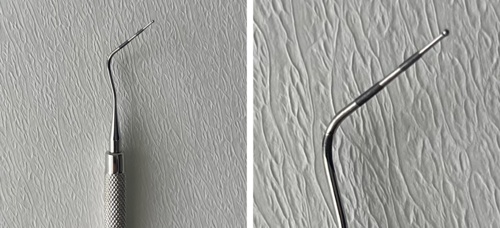Periodontal probing
Basic periodontal examination
The Basic Periodontal Examination (BPE), developed by the British Society of Periodontology, is a simple and rapid screening tool for the assessment of adult patients.26 A simplified BPE is used to screen children and adolescents (see BPE screening of children and adolescents <18 years).27 The BPE does not itself provide a diagnosis of periodontal disease but provides basic guidance on treatment need and indicates the level of further examination needed.
The BPE is not suitable for reassessment following periodontal treatment as it does not provide information about how individual sites respond to treatment or give an assessment of periodontal attachment levels. It is also not suitable for the screening of dental implants (see General care of dental implants).
The BPE is performed using a WHO BPE probe (see figure: WHO BPE probe). The BPE should form part of the routine examination of all patients at initial presentation and, with a few exceptions, at recall visits.
 .
.
During examination the specific WHO BPE probe should be ‘walked’ around the gingival margin and used to detect areas of periodontal pocketing, bleeding on probing, plaque or calculus accumulations. The results of the examination should be recorded in the patient notes.
A light probing force of 20-25 g (0.2-0.25 N), equivalent to the force required to blanch a fingernail, is used when probing the periodontal tissues (see figure: Probing force).

Bleeding on probing is a result of inflammation of the periodontal tissues that occurs in response to the presence of dental plaque biofilm; this may be less prominent in smokers where the inflammatory response is suppressed.
In non-smokers, an absence of bleeding on probing suggests that the periodontal tissues are healthy.
In non-smoking patients with a diagnosis of periodontitis, an absence of bleeding on probing suggests that the tissues are now stable or the disease is in remission.